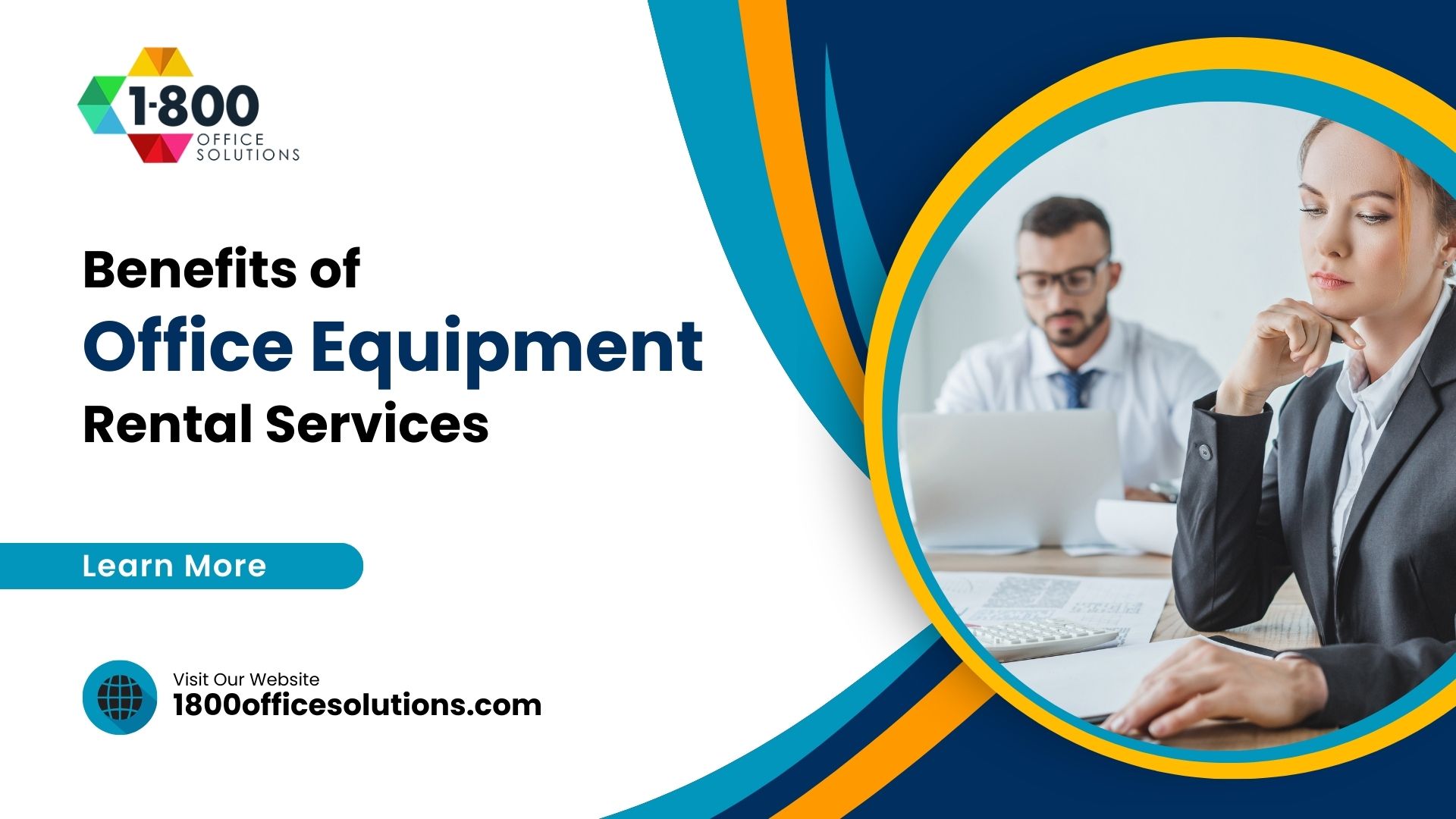7 Tips for Planning Your Office Technology Budget
From streamlining workflows to fostering collaboration, the right technology solutions can significantly boost productivity and propel your business forward. However, budgeting for office technology can be a challenge.
Technology is constantly evolving, and new hardware and software emerge seemingly every day. Budgeting requires careful planning and a keen understanding of your specific needs. This is where Return on Investment (ROI) comes in.
By calculating the potential return you’ll receive on your technology investment, you can make informed decisions about where to allocate your resources. A well-planned office technology budget ensures you have the right tools in place to optimize your operations, maximize employee efficiency, and ultimately achieve your business goals.
7 Steps to Planning Your Office Technology Budget
Understanding Your Needs
Before diving into specific office technology planning, it’s crucial to gain a clear understanding of your current and future technology needs. Ask yourself some key questions:
- What are your core business functions? Are you a data-driven marketing agency or a client-facing law firm? Understanding your core business will help you identify the technology solutions that are most relevant.
- What are the daily tasks your employees perform? Do they spend most of their time creating presentations, crunching numbers, or collaborating with remote colleagues? Analyzing employee workflows can reveal areas ripe for automation and efficiency improvements.
- Are there any inefficiencies in your current workflow? Are your employees bogged down by manual tasks or outdated software? Identifying pain points will help you prioritize technology investments that can streamline processes and save time.
- What are your growth projections for the next few years? Are you expecting to expand your team or enter new markets? Considering your future plans will ensure you choose scalable technology solutions that can grow with your business.
Inventory and Assessment
Taking stock of your existing technology infrastructure is a vital step in the planning process. Create a comprehensive inventory that includes all your hardware, software, and network equipment. Here’s what to include:
- Hardware: Desktops, laptops, tablets, printers, scanners, and any other physical devices used by your employees.
- Software: Operating systems, productivity suites (like Microsoft Office or Google Workspace), communication tools (like Slack or Zoom), and any industry-specific software applications your team relies on. Don’t forget to factor in licensing agreements and renewal dates.
- Network Infrastructure: Routers, switches, firewalls, and any other equipment that keeps your office connected and secure. Assessing the age and condition of your existing equipment will help you determine if upgrades are necessary.
Prioritization and Goal Setting
Once you’ve identified your technology needs, it’s time to prioritize them strategically. Not all upgrades are created equal. Prioritize your needs based on a combination of urgency and potential impact. Consider the following factors:
- Cost of upgrades vs. potential productivity gains: Don’t get caught up in the latest tech trends. Analyze the potential productivity gains associated with each upgrade and weigh them against the associated costs. Investing in faster computers for your design team might yield a higher return on investment (ROI) compared to upgrading rarely used printers.
- Security risks associated with outdated equipment: Outdated equipment with unpatched security vulnerabilities can leave your organization exposed to costly cybersecurity breaches. Prioritize upgrades for critical systems that handle sensitive data.
- Employee needs and preferences: Employee input is invaluable during this stage. Talk to your team members and understand their daily frustrations and pain points. Addressing these issues with targeted technology solutions can significantly boost morale and efficiency.
In addition to prioritizing needs, set clear and measurable goals for your technology investments. Don’t settle for vague statements like “improve communication.” Instead, aim for specific, time-bound objectives. For example, “Increase communication efficiency by 20% through the implementation of a new video conferencing platform within the next quarter.”
Research and Cost Comparisons
Exhaustive research is paramount before you open your wallet. Here’s a breakdown of key areas to explore:
Hardware:
- Research different hardware options and their features. Consider factors like processing power, storage capacity, and screen resolution. Don’t forget to factor in brand reputation, warranty coverage, and upgradeability. For instance, a business laptop with a robust warranty and easy upgrade options might be a better long-term investment compared to a cheaper model with limited support.
Software:
- Compare different software solutions and pricing models. Subscription-based cloud services can be a cost-effective option, offering automatic updates and reduced reliance on in-house IT staff. Explore open-source or free alternatives for basic functionalities where applicable.
Ongoing Costs:
Don’t get tunnel vision when it comes to upfront costs. Factor in the following ongoing expenses:
- Maintenance and support contracts: Ensure you have reliable support options in place to keep your hardware and software functioning smoothly.
- Software licensing renewals: Many software licenses require periodic renewals. Factor in these recurring costs when budgeting for new software.
- Internet service provider (ISP) fees: A robust and reliable internet connection is the backbone of any modern office. Ensure your ISP plan can handle your bandwidth needs.
Explore Cost-Saving Strategies
Even with a well-defined budget, there’s always room for optimization. Here are some creative strategies to help you stretch your technology dollars further:
-
Leasing vs. Buying: Consider leasing equipment for short-term needs or situations where rapid technological advancements are likely. This allows you to access the latest technology without a significant upfront outlay.
-
Used Equipment: Explore reliable vendors for used or refurbished equipment. You can often find significant savings on quality hardware that still has plenty of life left in it.
-
Cloud-Based Solutions: Cloud-based software subscriptions can minimize upfront costs and ongoing maintenance. With cloud services, you eliminate the need for expensive on-site servers and software licenses.
-
Open-Source Software: Free and open-source software can be a viable option for some applications, particularly for basic functionalities. Explore reputable open-source alternatives before committing to paid software.
-
Managed Service Providers (MSPs): Consider outsourcing your IT management to a Managed Service Provider (MSP). MSPs offer a predictable monthly fee for managing your entire IT infrastructure, potentially reducing your overall technology spending.
In addition to these strategies, leverage your existing technology investments whenever possible. For instance, can you upgrade existing software instead of purchasing entirely new solutions? Can you consolidate redundant subscriptions or streamline workflows to minimize the need for additional tools?
Negotiation and Vendor Selection
Once you’ve identified the right technology solutions, it’s time to find the best deals. Don’t be afraid to negotiate! Here are some key steps:
- Get quotes from multiple vendors: Don’t limit yourself to a single vendor. Get quotes from several reputable hardware, software, and service providers. This allows you to compare pricing and features to find the best value for your budget.
- Negotiate for better pricing and terms: Once you have quotes in hand, negotiate for better pricing and terms with preferred vendors. Highlight your budget constraints and express your willingness to commit to a long-term partnership.
- Look for bundled packages: Many vendors offer bundled packages that combine hardware, software, and services at a discounted rate. Explore these options to potentially save on overall costs.
- Select vendors with good reputations: Price isn’t the only factor to consider. Choose vendors with a proven track record of excellent customer support and technical expertise. A reliable vendor can save you time and money in the long run by ensuring smooth implementation and ongoing support for your technology solutions.
By following these tips, you can ensure you’re getting the most value out of your technology budget and optimizing your office workspace for success.
Future-Proofing Your Technology
Technology is constantly evolving, and the solutions that are cutting-edge today might be obsolete tomorrow. Future-proofing your technology involves taking steps to ensure your investments remain relevant and scalable well into the future.
-
Planning for Scalability: Choose solutions that can easily scale up or down as your business grows. Cloud-based solutions are generally a good option for scalability, as they can readily adapt to accommodate fluctuations in user numbers and data storage needs.
-
Focus on Security: Cybersecurity threats are on the rise. Prioritize solutions with robust security features, including regular updates and data encryption capabilities. This will help safeguard your organization’s sensitive information from cyberattacks.
-
Embrace New Technologies: Don’t be afraid to embrace new and emerging technologies that can significantly improve efficiency and productivity. For instance, artificial intelligence (AI) and automation tools can streamline repetitive tasks and free up your employees’ time to focus on higher-level strategic work.
-
Employee Training: Remember, even the most advanced technology is useless without a knowledgeable workforce. Allocate budget for employee training on new technology implementations. This will ensure your team can leverage the full potential of your new tools and maximize the benefits of your investments.
What People Also Ask
How often should I review my office technology budget?
It’s recommended to conduct a comprehensive review of your office technology budget annually. This allows you to assess your current needs, evaluate the effectiveness of your existing solutions, and adapt your budget to accommodate any changes in your business landscape. However, quarterly adjustments might be necessary to address unforeseen circumstances or take advantage of emerging cost-saving opportunities.
What happens if unexpected technology needs arise?
It’s always wise to be prepared for the unexpected. Consider setting aside a contingency fund within your overall technology budget to address unforeseen technology needs. Alternatively, explore short-term financing options to bridge the gap until your next budget cycle.
Should I involve my employees in the budgeting process?
Absolutely! Your employees are on the front lines using your technology solutions every day. Their input can be invaluable in identifying critical technology needs and potential areas for improvement. Engaging your team in the budgeting process can also help foster a sense of ownership and buy-in for new technology implementations.
Conclusion
By following these steps, you can gain a clear understanding of your needs, prioritize investments wisely, and leverage technology to optimize your workflows, empower your employees, and ultimately propel your business forward.
Remember, technology is an investment, and with careful planning and informed decision-making, you can ensure your technology choices deliver a measurable return on investment and position your organization for long-term success.












